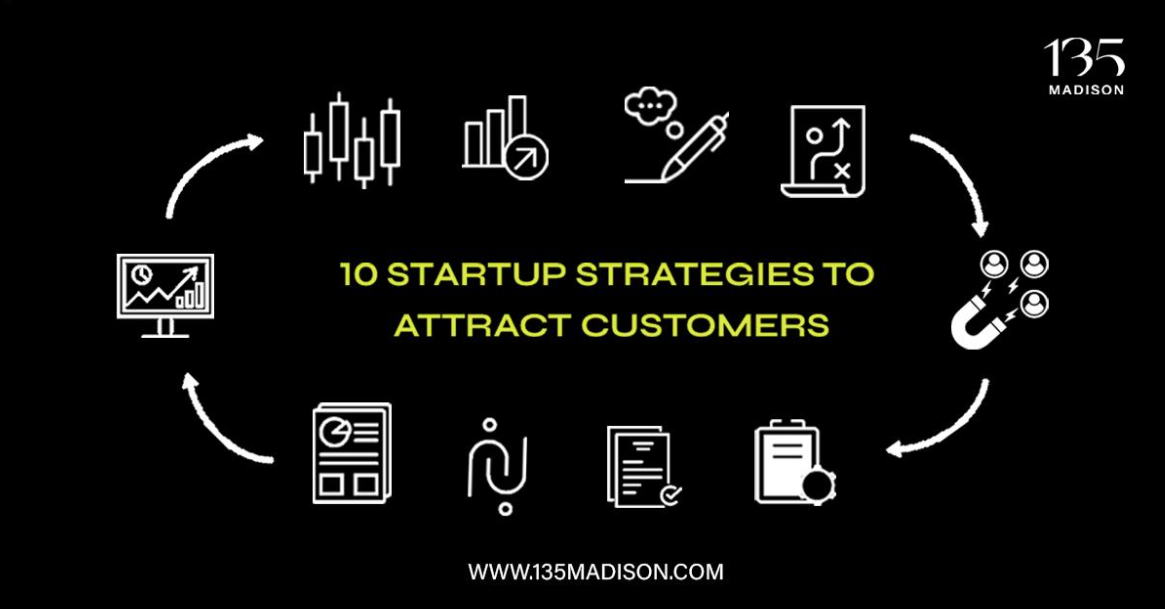10 startup strategies to attract your customers
A startup needs to attract customers!
Attracting them within the pitch deck is important.
Here’s how to approach this:
1. Understand Market
- Begin with a concise overview of your target market and customer segments.
- Highlight the customer needs, preferences, and behaviors.
- Explain how this understanding shapes your product development and marketing strategies.
2. Value Proposition
- State your value proposition. What makes your product or service unique, and why would customers choose you over competitors?
- Link this value proposition to your marketing messaging and how it will be communicated to your target audience.
3. Marketing Channels and Strategies
- Outline the specific marketing channels you plan to use to reach your audience (e.g., social media, content marketing, email campaigns, SEO, PPC advertising.)
- Provide a rationale on why it’s chosen based on your market research and customer behavior.
4. Customer Acquisition Plan
- Detail your customer acquisition strategy, including both organic and paid methods. Explain how these strategies will be implemented to attract your initial user base and scale up.
- Include estimated customer acquisition costs and how these figures were determined.
5. Growth Hacking and Viral Strategies
- Describe any growth hacking strategies or plans for viral marketing that could accelerate customer acquisition.
- Provide examples or case studies if you have conducted preliminary tests or have comparable industry benchmarks.
6. Track and Test
- Highlight how you will track the effectiveness of your marketing strategies, including the tools and metrics (KPIs) you will use.
- Discuss your approach to A/B testing and other methods to optimize marketing campaigns for better performance.
7. Use Technology and Innovation
- Explain how you will leverage technology (e.g., AI for personalized marketing, automation tools) to enhance your marketing efforts and improve customer experience.
- Mention any innovative marketing tactics that set you apart, such as using AR/VR, blockchain for customer loyalty programs, etc.
8. Budget and ROI
- Provide a high-level budget for your marketing activities and expected ROI. This should include projections on how marketing spend will translate into customer growth rates.
- Describe how you will adjust your marketing spend based on performance data and market feedback.
9. Case Studies or Early Successes
- Share any early successes or pilot case studies demonstrating the effectiveness of your marketing strategies.
- Testimonials or user stories can also be influential in showcasing early traction and market fit.
10. Future Marketing Roadmap
- Outline future marketing initiatives and how you plan to scale your customer acquisition efforts as the business grows.
- Include entering new markets, expanding your product line, or adopting new marketing technologies.

